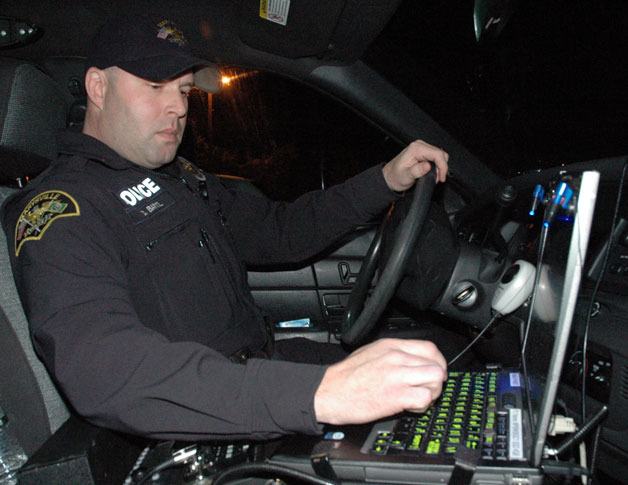MARYSVILLE — For Marysville’s Craig Bartl, this December marked his third in a row of participating in the “Night of 1,000 Stars” impaired-driving traffic safety emphasis patrols organized by Snohomish County and Washington state law enforcement.
Although Bartl is a detective with the Marysville Police Department, he estimates that he’s continued to take part in dozens of such emphasis patrols within the past few years, and he even teaches other officers how to administer field sobriety tests.
From the late evening of Friday, Dec. 14, to the early morning of Saturday, Dec. 15, Bartl joined fellow local police officers, Snohomish County Sheriff’s deputies and Washington State Patrol troopers in conducting the safety emphasis patrols which earned their name from the star badges worn by law enforcement agents on duty during those hours.
Although Bartl is a self-described “Christmas junkie” who enjoys listening to seasonal music on his car radio, his focus is on listening for calls during the “Night of 1,000 Stars,” because the winter holidays are typically one of his most active times for intercepting traffic violators.
“Christmas and New Year’s, Superbowl Sunday, the Fourth of July, Labor Day weekend, pretty much any time there’s parties, we’re on alert,” Bartl said. “We want people to enjoy themselves, but they just need to be smart after they have their fun.”
Bartl’s heaviest year for DUIs was last December, when he picked up three drivers for alcohol. Among the warning signs he looks for are swerving between lanes and failing to signal, as well as speeding and driving after dark without lights on.
“Some drivers will stop at a bar earlier in the day and not realize how late it is when they leave,” said Bartl, who follows the safety emphasis patrols’ standard operating procedure of making three contacts an hour with drivers, regardless of whether they appear impaired or not. “It’s not always about writing tickets. We also just want to let people know that we’re out and about.”
Within his first hour of patrolling South Marysville, Bartl had already pulled over one driver for talking on their cell phone, another for exhibiting behavior that turned out to be the result of anxiety from having a patrol car behind them, and a third for not having their seat belts secured. In all three instances, Bartl let the drivers off with verbal warnings.
“We usually see more DUIs right after midnight, although they can obviously be earlier,” Bartl said, before handing out “Click It 2 Ride” scan-cards to the attendees of a party at the Marysville Opera House, so that they could catch cabs after their event concluded. “Regardless, we don’t profile people, we maintain consistent standards and we treat people with respect. I’ve been surprised by how many people have thanked me, even after I’ve given them citations, but that’s part of teaching them.”
At the same time that Bartl aims to educate the public on DUIs, he emphasized that he and his fellow Marysville Police officers take DUIs seriously.
“We believe that DUI collisions are crimes just like person-to-person crimes and felony crimes,” Bartl said. “I do this because of the people who have lost loved ones to impaired drivers.”
Tracy McMillan, the Target Zero manager for the Snohomish County Traffic Safety Task Force, informed law enforcement agents who went out on the “Night of 1,000 Stars” patrols that evening that 53 percent of all Snohomish County traffic fatalities over the course of the past five years have been drug or alcohol related.
“What we tell people who have been pulled over for DUI is that the difference between them and someone in prison is that they haven’t killed anyone yet,” said McMillan, who cited statistics showing that impaired drivers are estimated to have driven impaired about 80 times before their first arrests. “Thanks to officers like you, our death rates on the road are lower, and we couldn’t be more proud.”
These special overtime DUI and Target Zero emphasis patrols are paid for by a special grant from the Washington Traffic Safety Commission, whose goal is to reduce traffic deaths and disabling injuries to zero by the year 2030.



